

Alpha, 2 x 153mm bore/127mm stroke, 3 litre swept volume (17.3).
LSM 17 started off as (another) unsuccessful open cycle engine (17.1). Unlike closed cycle Stirling engines, open cycle air engines induct and heat fresh air every stroke, exhausting it after expansion- called Ericsson cycle engines, after John Ericsson. Confusingly, Ericsson is now best known for making Stirling cycle engines- and for the Novelty which was runner up to Stephenson’s Rocket in the 1929 Rainhill Trials- and for the Monitor, an ironclad warship, which prevailed against the Confederate’s Merrimac in the American Civil War. The Ericsson thermodynamic cycle is often now called the Brayton cycle. It is the theoretical cycle that gas turbines operate on.
Open cycle engines have an advantage in not requiring cooling but are difficult to get useful power from in reciprocating form, because of pumping losses and because they cannot use pressurised working fluids. Ericsson succeeded in 1833 and 1853 with two different layouts though they were commercially marginal. My two attempts, 12.1 and 17.1 have been miserable failures. Unlike for 12.1, 17.1’s valves sealed well but pumping losses killed it- it felt ‘dead’ from the start, never had any ‘bounce’. I may even have been fooling myself imagining it had a rotational direction preference (Jude 2). Is there a scale effect in this, do open cycle engine only work if they are much bigger- or am I missing something?
Ericsson changed to developing closed (Stirling) cycle engines from the mid-19th century.
Converting LSM17.1 to closed cycle form required extensions to the pistons and cylinders and the addition of water jackets for cooling. An annular heat exchanger was also fitted to the cold side and the hot side changed from tube style to annular. For piston control, the double crank was changed to a Ross yoke. 17.2 was built with provision for a wire mesh regenerator in the transfer manifold but this was removed because of carbon build-up (see LSM 11).
17.2 is intended as a standard against which to compare other LSM series engines. Because alphas have higher intrinsic compression ratios than betas, they tend to require more heat to start (even more so because they require two seals, which increases friction in comparison with the single seal beta form of 15.4), but generally then have higher specific output. 17.2’s max power has not yet been tested because it’s currently fitted with a simple barbecue type ring burner which does not provide enough heat for much more than self-running. Changing this will be a good winter job- when a bigger burner will be welcome in my workshop!
17.2 runs well but is noisier than it should be because the hot piston has excess clearance, which can best be fixed with a new piston, quite a major job and unnecessary except for aesthetics- because it doesn’t significantly affect performance.
PETER LYNN, ASHBURTON, NEW ZEALAND, to MAY 2025

LSM 17.1 recuperator and heat transfer tubes, underside view
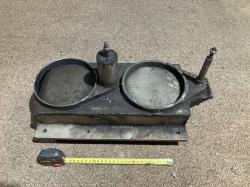
LSM 17.1 valves and cylinder stubs
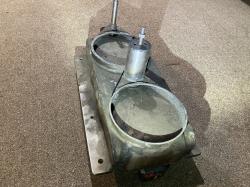
LSM 17.1 valves and ports
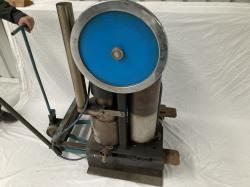
LSM 17.2 Alpha Stirling engine flywheel side
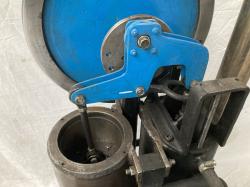
LSM 17.2 Alpha Stirling engine Ross yoke, close up
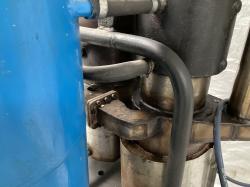
LSM 17.2 Alpha Stirling engine transfer and regenerator manifold
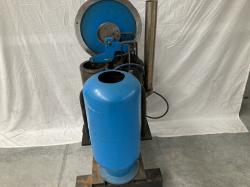
LSM 17.2 Alpha Stirling engine, crank side view